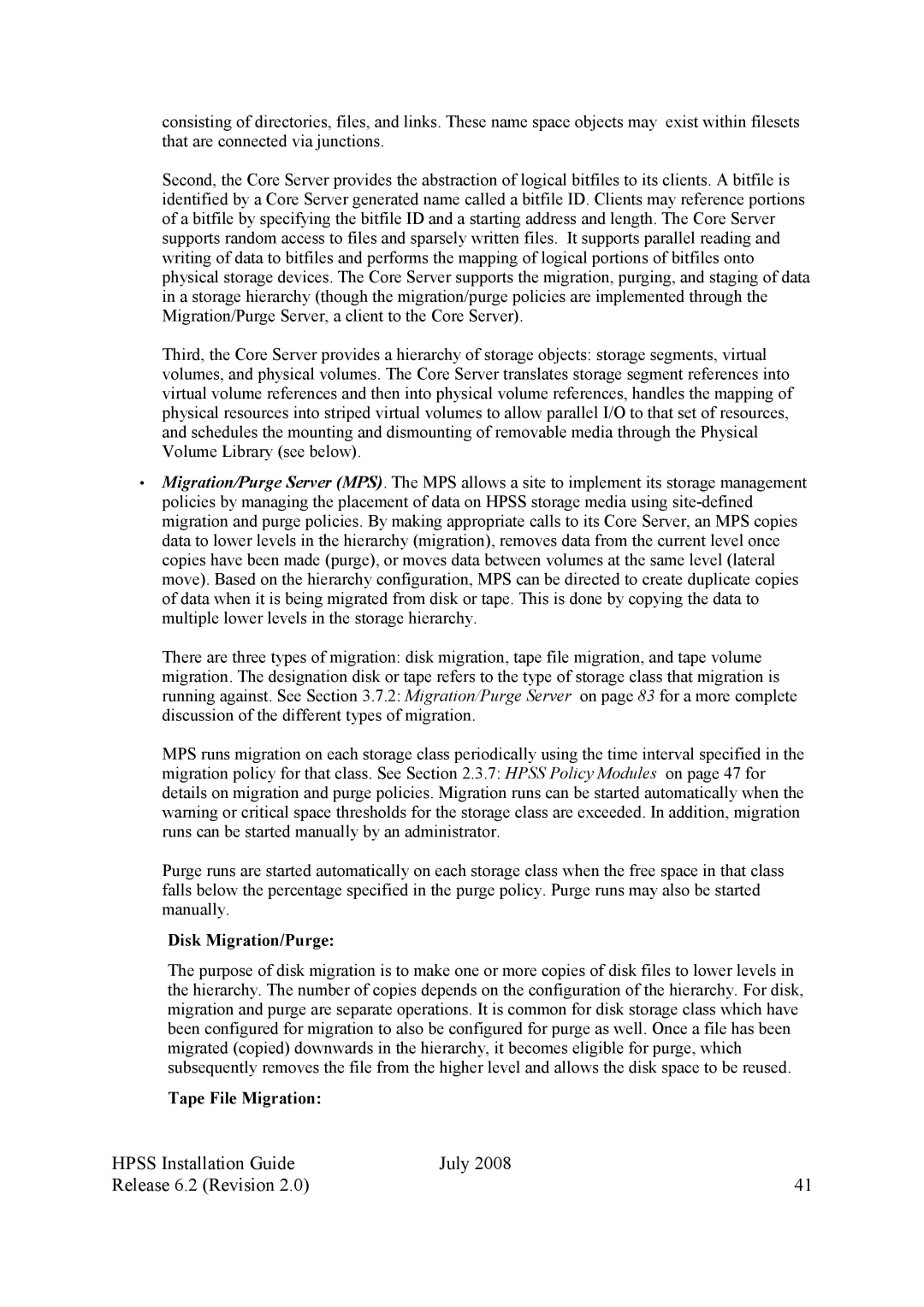consisting of directories, files, and links. These name space objects may exist within filesets that are connected via junctions.
Second, the Core Server provides the abstraction of logical bitfiles to its clients. A bitfile is identified by a Core Server generated name called a bitfile ID. Clients may reference portions of a bitfile by specifying the bitfile ID and a starting address and length. The Core Server supports random access to files and sparsely written files. It supports parallel reading and writing of data to bitfiles and performs the mapping of logical portions of bitfiles onto physical storage devices. The Core Server supports the migration, purging, and staging of data in a storage hierarchy (though the migration/purge policies are implemented through the Migration/Purge Server, a client to the Core Server).
Third, the Core Server provides a hierarchy of storage objects: storage segments, virtual volumes, and physical volumes. The Core Server translates storage segment references into virtual volume references and then into physical volume references, handles the mapping of physical resources into striped virtual volumes to allow parallel I/O to that set of resources, and schedules the mounting and dismounting of removable media through the Physical Volume Library (see below).
•Migration/Purge Server (MPS). The MPS allows a site to implement its storage management policies by managing the placement of data on HPSS storage media using
There are three types of migration: disk migration, tape file migration, and tape volume migration. The designation disk or tape refers to the type of storage class that migration is running against. See Section 3.7.2: Migration/Purge Server on page 83 for a more complete discussion of the different types of migration.
MPS runs migration on each storage class periodically using the time interval specified in the migration policy for that class. See Section 2.3.7: HPSS Policy Modules on page 47 for details on migration and purge policies. Migration runs can be started automatically when the warning or critical space thresholds for the storage class are exceeded. In addition, migration runs can be started manually by an administrator.
Purge runs are started automatically on each storage class when the free space in that class falls below the percentage specified in the purge policy. Purge runs may also be started manually.
Disk Migration/Purge:
The purpose of disk migration is to make one or more copies of disk files to lower levels in the hierarchy. The number of copies depends on the configuration of the hierarchy. For disk, migration and purge are separate operations. It is common for disk storage class which have been configured for migration to also be configured for purge as well. Once a file has been migrated (copied) downwards in the hierarchy, it becomes eligible for purge, which subsequently removes the file from the higher level and allows the disk space to be reused.
Tape File Migration:
HPSS Installation Guide | July 2008 |
Release 6.2 (Revision 2.0) | 41 |
